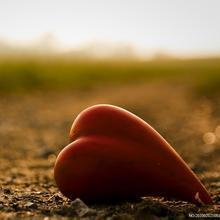Creatures in the real world constantly encounter new and diverse challenges they have never seen before. They will often need to adapt to some of these tasks and solve them in order to survive. This almost endless world of novel challenges is not as common in virtual environments, where artificially evolving agents often have a limited set of tasks to solve. An exception to this is the field of open-endedness where the goal is to create unbounded exploration of interesting artefacts. We want to move one step closer to creating simulated environments similar to the diverse real world, where agents can both find solvable tasks, and adapt to them. Through the use of MAP-Elites we create a structured repertoire, a map, of terrains and virtual creatures that locomote through them. By using novelty as a dimension in the grid, the map can continuously develop to encourage exploration of new environments. The agents must adapt to the environments found, but can also search for environments within each cell of the grid to find the one that best fits their set of skills. Our approach combines the structure of MAP-Elites, which can allow the virtual creatures to use adjacent cells as stepping stones to solve increasingly difficult environments, with open-ended innovation. This leads to a search that is unbounded, but still has a clear structure. We find that while handcrafted bounded dimensions for the map lead to quicker exploration of a large set of environments, both the bounded and unbounded approach manage to solve a diverse set of terrains.
翻译:真实世界中的生物会不断遭遇以前从未遇到过的各种挑战。他们通常需要适应某些任务并解决它们以求生存。这种几乎无尽的新挑战世界在虚拟环境中并不常见,人工进化代理通常只有有限的任务要解决。开放度领域是个例外,其目标是创建有趣构件的无边界探索。我们希望迈向创建类似于真实世界的多样化模拟环境的目标,代理可以在其中找到可解决的任务并适应它们。通过使用MAP-Elites,我们创建了地形和虚拟生物的结构化库存地图。通过在格子中使用新颖性作为维度,地图可以不断发展以鼓励新环境的探索。代理必须适应发现的环境,但也可以在网格的每个单元格内搜索环境,以找到最适合其技能集的环境。我们的方法结合了MAP-Elites的结构化特性,可以允许虚拟生物将相邻单元格用作解决越来越困难的环境的跳板,并与开放式创新相结合。这导致了一个无限的搜索,但仍具有清晰的结构。我们发现,虽然为地图手工制作有限维度会更快地探索大量环境,但是有限和无限方法都可以解决多样化的地形。



